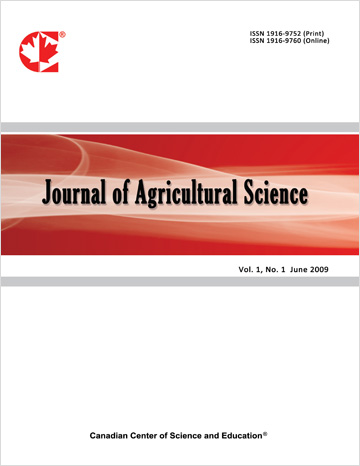Genetic Analysis of New Maize Hybrids for Yield and Resistance to Aflatoxin Accumulation
- Allen Oppong
- Abu M. Dadzie
- Beatrice Ifie
- Maxwell D. Asante
- Ruth N. A. Prempeh
- Linda A. Abrokwah
- Zipporah Appiah Kubi
- Esther A. Marfo
- Esther A. Ananng
- Marilyn L. Warburton
Abstract
Maize (Zea mays L.) is the most important cereal crop in sub-Saharan Africa providing food for many of its inhabitants. However, production is hampered by low yields and aflatoxin contamination, among others. The toxin contaminates maize before harvest and during storage. Ghana lacks regulatory infrastructure for monitoring and detecting aflatoxin in grains prior to market, and most of the local maize varieties have been found to be susceptible to aflatoxin accumulation. Host resistance is envisaged as a key approach in addressing the aflatoxin menace. Thus, this study was conducted to identify new hybrids that combine high yield with resistance to aflatoxin accumulation as well as study the mode of gene controlling tolerance to aflatoxin accumulation. Sixteen aflatoxin resistant inbreds from exotic sources were crossed as males to 10 local germplasm in a North Carolina II design to generate 160 new hybrids. These were planted together with 9 checks using a 13 × 13 alpha lattice with three replications. The new hybrids were evaluated across six environments in two seasons. Five plants each per hybrid were inoculated with a local strain of Aspergillus flavus at a concentration of 9 × 107conidia/ml. Ninety-six out of the 169 crosses were analyzed statistically. Significant effect of environment and genotypes for all traits especially, for aflatoxin accumulation resistance and yield were observed. The general combining ability effect of males for all traits were found significant (P < 0.05) whereas that of the females were not significant for all traits. Inbreds with consistent significant negative GCA effect for aflatoxin reduction were identified (MP715, TZI8, MP719). Furthermore, the underlying genetic control for the aflatoxin accumulation resistance trait was found to be via both GCA and SCA effects. Heritability estimates were moderate, suggesting permissible transfer of traits during selection to create high yielding aflatoxin resistant hybrids for consumers.
- Full Text:
 PDF
PDF
- DOI:10.5539/jas.v13n10p15
Journal Metrics
- h-index: 67
- i10-index: 839
- WJCI (2023): 0.884
- WJCI Impact Factor (2023): 0.196
Index
- AGRICOLA
- AGRIS
- BASE (Bielefeld Academic Search Engine)
- Berkeley Library
- CAB Abstracts
- ChronosHub
- CiteSeerx
- CNKI Scholar
- Copyright Clearance Center
- CrossRef
- DESY Publication Database
- DTU Library
- e-Library
- EBSCOhost
- EconPapers
- Elektronische Zeitschriftenbibliothek (EZB)
- EuroPub Database
- Excellence in Research for Australia (ERA)
- Google Scholar
- Harvard Library
- IDEAS
- iDiscover
- Jisc Library Hub Discover
- JournalTOCs
- KindCongress
- LIVIVO (ZB MED)
- LOCKSS
- Max Planck Institutes
- Mendeley
- MIAR
- Mir@bel
- NLM Catalog PubMed
- Norwegian Centre for Research Data (NSD)
- Open J-Gate
- OUCI
- PKP Open Archives Harvester
- Polska Bibliografia Naukowa
- Qualis/CAPES
- RefSeek
- RePEc
- ROAD
- ScienceOpen
- Scilit
- SCiNiTO
- Semantic Scholar
- SHERPA/RoMEO
- Southwest-German Union Catalogue
- Standard Periodical Directory
- Stanford Libraries
- SUDOC
- Swisscovery
- Technische Informationsbibliothek (TIB)
- Trove
- UCR Library
- Ulrich's
- UniCat
- Universe Digital Library
- WorldCat
- WRLC Catalog
- Zeitschriften Daten Bank (ZDB)
Contact
- Anne BrownEditorial Assistant
- jas@ccsenet.org
